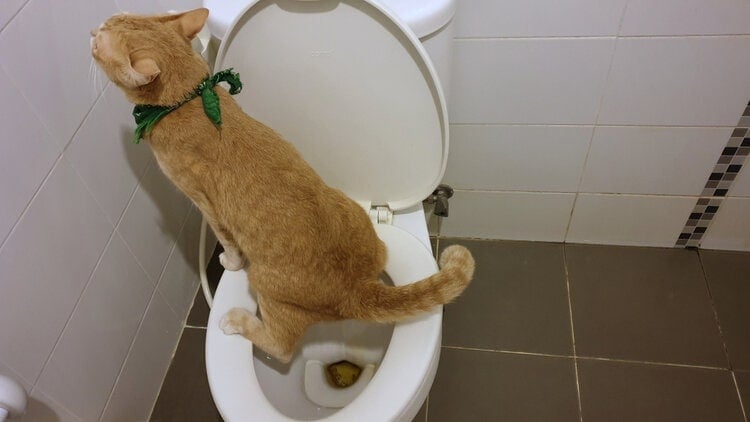They are making a number of good annotation relating to How to Dispose of Cat Poop and Litter Without Plastic Bags in general in this great article further down.

Introduction
As pet cat proprietors, it's vital to bear in mind how we get rid of our feline good friends' waste. While it may appear practical to purge cat poop down the bathroom, this method can have detrimental effects for both the setting and human health.
Ecological Impact
Flushing pet cat poop presents hazardous microorganisms and parasites right into the water, presenting a significant risk to aquatic environments. These contaminants can adversely influence aquatic life and compromise water top quality.
Wellness Risks
Along with environmental concerns, flushing cat waste can also pose wellness threats to people. Feline feces might consist of Toxoplasma gondii, a parasite that can create toxoplasmosis-- a potentially extreme illness, particularly for pregnant ladies and individuals with damaged immune systems.
Alternatives to Flushing
Thankfully, there are more secure and extra accountable methods to dispose of cat poop. Think about the complying with choices:
1. Scoop and Dispose in Trash
One of the most typical technique of dealing with pet cat poop is to scoop it right into a naturally degradable bag and throw it in the trash. Be sure to utilize a specialized clutter scoop and take care of the waste quickly.
2. Usage Biodegradable Litter
Go with biodegradable pet cat trash made from products such as corn or wheat. These clutters are eco-friendly and can be securely taken care of in the trash.
3. Hide in the Yard
If you have a backyard, take into consideration hiding pet cat waste in a designated area away from veggie yards and water resources. Make certain to dig deep enough to prevent contamination of groundwater.
4. Install a Pet Waste Disposal System
Purchase a family pet garbage disposal system specifically developed for cat waste. These systems utilize enzymes to break down the waste, decreasing odor and ecological effect.
Verdict
Responsible family pet possession expands past offering food and shelter-- it likewise entails appropriate waste administration. By avoiding purging pet cat poop down the commode and opting for alternate disposal techniques, we can reduce our ecological footprint and secure human health and wellness.
Why Can’t I Flush Cat Poop?
It Spreads a Parasite
Cats are frequently infected with a parasite called toxoplasma gondii. The parasite causes an infection called toxoplasmosis. It is usually harmless to cats. The parasite only uses cat poop as a host for its eggs. Otherwise, the cat’s immune system usually keeps the infection at low enough levels to maintain its own health. But it does not stop the develop of eggs. These eggs are tiny and surprisingly tough. They may survive for a year before they begin to grow. But that’s the problem.
Our wastewater system is not designed to deal with toxoplasmosis eggs. Instead, most eggs will flush from your toilet into sewers and wastewater management plants. After the sewage is treated for many other harmful things in it, it is typically released into local rivers, lakes, or oceans. Here, the toxoplasmosis eggs can find new hosts, including starfish, crabs, otters, and many other wildlife. For many, this is a significant risk to their health. Toxoplasmosis can also end up infecting water sources that are important for agriculture, which means our deer, pigs, and sheep can get infected too.
Is There Risk to Humans?
There can be a risk to human life from flushing cat poop down the toilet. If you do so, the parasites from your cat’s poop can end up in shellfish, game animals, or livestock. If this meat is then served raw or undercooked, the people who eat it can get sick.
In fact, according to the CDC, 40 million people in the United States are infected with toxoplasma gondii. They get it from exposure to infected seafood, or from some kind of cat poop contamination, like drinking from a stream that is contaminated or touching anything that has come into contact with cat poop. That includes just cleaning a cat litter box.
Most people who get infected with these parasites will not develop any symptoms. However, for pregnant women or for those with compromised immune systems, the parasite can cause severe health problems.
How to Handle Cat Poop
The best way to handle cat poop is actually to clean the box more often. The eggs that the parasite sheds will not become active until one to five days after the cat poops. That means that if you clean daily, you’re much less likely to come into direct contact with infectious eggs.
That said, always dispose of cat poop in the garbage and not down the toilet. Wash your hands before and after you clean the litter box, and bring the bag of poop right outside to your garbage bins.
https://trenchlesssolutionsusa.com/why-cant-i-flush-cat-poop/

I ran across that blog posting about Can You Flush Cat Poo or Litter Down the Toilet? while doing a lookup on the search engines. Remember to take the time to distribute this article if you enjoyed reading it. Many thanks for your time. Come back soon.
Source